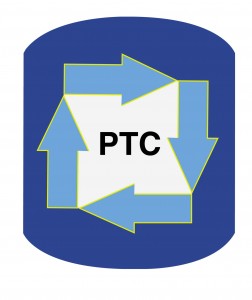The use of the expensive hexafluorophosphate counteranion is surprising for the PTC carbene addition described in this month’s PTC Reaction of the Month (US Patent 10,219,516). We do not know the rationale of the inventors for choosing tetrabutylammonium hexafluorophosphate, which is usually used as an electrolyte in nonaqueous electrochemistry since it is highly soluble and stable in polar organic solvents used in such electrochemistry.
 If the inventors really wanted to use a tetrabutylammonium salt for some reason, they could probably have used the more common and less expensive tetrabutylammonium hydrogen sulfate. The excess base (25 equiv) was more than enough to neutralize the hydrogen of the hydrogen sulfate, so that would not have been a concern, especially since the resulting sulfate anion is not nucleophilic and has low affinity for pairing with the quat.
If the inventors really wanted to use a tetrabutylammonium salt for some reason, they could probably have used the more common and less expensive tetrabutylammonium hydrogen sulfate. The excess base (25 equiv) was more than enough to neutralize the hydrogen of the hydrogen sulfate, so that would not have been a concern, especially since the resulting sulfate anion is not nucleophilic and has low affinity for pairing with the quat.
Tetrabutylammonium bromide, which is the least expensive and most common tetrabutylammonium salt, would have been less desirable since it could have resulted in some Cl/Br exchange (in chloroform or the CCl3- anion) which would contaminate the product.
The more classical triethyl benzyl ammonium (TEBA) chloride may have been a better choice for this PTC carbene addition, or possibly methyl tributyl ammonium chloride, which would probably likely be more stable than TEBA under these conditions.
To benefit from PTC Organics’ highly specialized expertise in choosing the best phase-transfer catalyst, now contact Marc Halpern of PTC Organics to explore collaboration to achieve low-cost high-performance green chemistry using PTC.
About Marc Halpern

Dr. Halpern is founder and president of PTC Organics, Inc., the only company dedicated exclusively to developing low-cost high-performance green chemistry processes for the manufacture of organic chemicals using Phase Transfer Catalysis. Dr. Halpern has innovated PTC breakthroughs for pharmaceuticals, agrochemicals, petrochemicals, monomers, polymers, flavors & fragrances, dyes & pigments and solvents. Dr. Halpern has provided PTC services on-site at more than 260 industrial process R&D departments in 37 countries and has helped chemical companies save > $200 million. Dr. Halpern co-authored five books including the best-selling “Phase-Transfer Catalysis: Fundamentals, Applications and Industrial Perspectives” and has presented the 2-day course “Practical Phase-Transfer Catalysis” at 50 locations in the US, Europe and Asia.
Dr. Halpern founded the journal “Industrial Phase-Transfer Catalysis” and “The PTC Tip of the Month” enjoyed by 2,100 qualified subscribers, now beyond 130 issues. In 2014, Dr. Halpern is celebrating his 30th year in the chemical industry, including serving as a process chemist at Dow Chemical, a supervisor of process chemistry at ICI, Director of R&D at Sybron Chemicals and founder and president of PTC Organics Inc. (15 years) and PTC Communications Inc. (20 years). Dr. Halpern also co-founded PTC Interface Inc. in 1989 and PTC Value Recovery Inc. in 1999. His academic breakthroughs include the PTC pKa Guidelines, the q-value for quat accessibility and he has achieved industrial PTC breakthroughs for a dozen strong base reactions as well as esterifications, transesterifications, epoxidations and chloromethylations plus contributed to more than 100 other industrial PTC process development projects.
Dr. Halpern has dedicated his adult life to his family and to phase-transfer catalysis (in that order!).
 If the inventors really wanted to use a tetrabutylammonium salt for some reason, they could probably have used the more common and less expensive tetrabutylammonium hydrogen sulfate. The excess base (25 equiv) was more than enough to neutralize the hydrogen of the hydrogen sulfate, so that would not have been a concern, especially since the resulting sulfate anion is not nucleophilic and has low affinity for pairing with the quat.
If the inventors really wanted to use a tetrabutylammonium salt for some reason, they could probably have used the more common and less expensive tetrabutylammonium hydrogen sulfate. The excess base (25 equiv) was more than enough to neutralize the hydrogen of the hydrogen sulfate, so that would not have been a concern, especially since the resulting sulfate anion is not nucleophilic and has low affinity for pairing with the quat.
